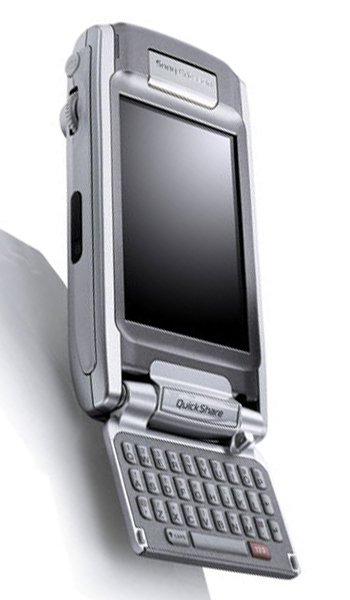Samsung Galaxy J7 (2017) vs Sony Ericsson P910 Comparación y Diferencias
Smartphone 1
-745.jpg)
Samsung Galaxy J7 (2017)
Smartphone 2

Sony Ericsson P910
Smartphone 3
Samsung Galaxy J7 (2017) o Sony Ericsson P910 Comparación de características
o
 Características
Características
| Marca y modelo | Samsung Galaxy J7 (2017) | Sony Ericsson P910 | |
| Votos | (+0) | (+0) | |
| Fecha de lanzamiento | 2017, Junio | 2004, Q3 | |
| Dimensiones (AlxAnxProf) | 152.5 Х 74.8 Х 8 mm | 115 Х 58 Х 26 mm | |
| Peso | 181 g | 150 g | |
| Cuerpo | Panel frontal de vidrio, cuerpo de aluminio | ||
| Funda | Comprar en Amazon | Comprar en Amazon | |
| Colores | Black, Blue, Gold, Rose Gold | Urban Grey | |
| Batería | 3600 mAh, No extraíble, Li-Ion | 1000 mAh, Extraíble, Li-Po | |
| Duración de la batería |
Tiempo de llamadas - Hasta 24 h (3G) Reproducción de audio - Hasta 91 h |
Tiempo en reposo - Hasta 400 h Tiempo de llamadas - Hasta 13 h |
|
| Telcado | |||
| Precio indicativo | 200 EUR | ||
| Consultar precio | en Amazon | en Amazon |
 Pantalla
Pantalla
| Tecnología | Super AMOLED | TFT | |
| Pantalla táctil | sí, capacitiva | sí, resistiva | |
| Profundidad del color | 16M | 256K | |
| Tamaño | 5.5" inc | 2.9" inc | |
| Área de la pantalla | 83.4 cm2 | 24.8 cm2 | |
| Proporción (Altura:Ancho) | 16:9 (Al:An) | 3:2 (Al:An) | |
| Proporción (pantalla:cuerpo) | 73.1% | 37.2% | |
| Resolucion | 1080 x 1920 px | 208 x 320 px | |
| Puntos por pulgada | 401 PPI | 132 PPI | |
| Otros | - Always-on display | - Handwriting recognition -JogDial |
|
| Protector de pantalla | Comprar en Amazon | Comprar en Amazon |
 Cámaras y vídeo
Cámaras y vídeo
| Cámara trasera principal | 13 MP, cámara singular | 0.3 MP, cámara singular | |
| Cámara especificaciones | -13 MP, f/1.7, 27mm (gran angular), 1/3.1'', 1.12µm, AF | ||
| Funciones | LED flash, panorama, HDR | ||
| Vídeo | 1080p@30fps | Yes | |
| Cámara frontal (selfie) | 13 MP, cámara singular | 0 MP, | |
| Características | -13 MP, f/1.9, 28mm (gran angular) | ||
| Funciones | LED flash | ||
| Vídeo | 1080p@30fps |
 Rendimiento
Rendimiento
| Sistema Operativo (OS) | Android 7.0 (Nougat) | Symbian 7.0, UIQ v2.1 UI | |
| Chipset | - Exynos 7870 Octa (14 nm) | ||
| Procesador central (CPU) | Octa-core 1.6 GHz Cortex-A53 | 32-bit Philips Nexperia PNX4000 156 MHz | |
| Procesador de gráficos (GPU) | Mali-T830 MP1 | ||
| Tarjeta de memoria externa | microSD, hasta 256 GB (slot dedicado) | Memory Stick Duo Pro, hasta 2 GB, 32 MB incluido/a | |
| Memoria Interna | 16 GB, 3 GB RAM | 64 MB |
 Benchmark
Benchmark
| Antutu 7 Total | |||
| GeekBench 5 Single Core | 118 | ||
| GeekBench 5 Multi-Core | 447 | ||
| GeekBench 4 Single Core | 713 | ||
| GeekBench 4 Multi-Core | 3482 | ||
| GeekBench 4 RenderScript | 2288 |
 Comunicación y conectividad
Comunicación y conectividad
| Tarjeta SIM | Dual SIM (Nano-SIM, modo de espera dual) | Mini-SIM | |
| Red | GSM / HSPA / LTE | GSM | |
| Frecuencias | -2G - GSM 850 / 900 / 1800 / 1900 - SIM 1 & SIM 2 -3G - HSDPA 850 / 900 / 1900 / 2100 -4G - LTE band 1(2100), 3(1800), 5(850), 7(2600), 8(900), 20(800), 28(700), 40(2300) |
||
| Velocidad de internet | HSPA 42.2/5.76 Mbps, LTE-A (2CA) Cat6 300/50 Mbps | ||
| GPRS | Si | Class 8 | |
| Edge | Si | No | |
| Wi-Fi | Wi-Fi 802.11 a/b/g/n/ac, banda dual, WiFi Direct, hotspot | No | |
| GPS | Si, dependiente del mercado A-GPS, GLONASS, BDS | No | |
| NFC | Si | ||
| USB | microUSB 2.0, USB On-The-Go | Proprietary | |
| Bluetooth | 4.1, A2DP, LE | 1.1 | |
| Radiación dañina |
SAR EU - 0.57 W/kg (cabeza) 1.33 W/kg (cuerpo) |
SAR - 1.50 W/kg (cabeza) 0.97 W/kg (cuerpo) SAR EU - 0.88 W/kg (cabeza) |
 Música y Audio
Música y Audio
| Radio | FM radio | No | |
| Jack de auriculares | Sí | No |
 Otros extras
Otros extras
| Sensores | - Sensor de huella digital (en la parte frontera), Acelerómetro, Giroscopio, Sensor de proximidad, brújula | , Puerto de infrarrojos | |
| Otros extras |
- ANT+ |
- MP4/MP3 player -Predictive text input -Sync ML -Organizer |
|
| Versiones |
- Versiones: J730F/DS (Global Dual-SIM); J730FM/DS (UAE, Russia) |
- P910i 900/1800/1900 MHzP910c 900/1800/1900 MHz for China MainlandP910a 850/1800/1900 MHz for North and Latin America |
Opiniones y comentarios sobre Samsung Galaxy J7 (2017) y Sony Ericsson P910
Si tuvieras que recomendar uno de estos teléfonos a un amigo, ¿cuál sería y por qué? Comparte tus argumentos utilizando el botón Añadir Opinión!
